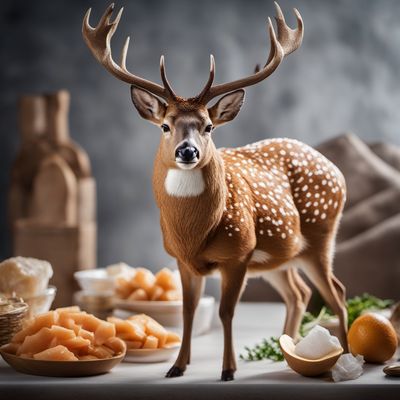
Ingredient
Marine mammals fat tissue
The Ocean's Nutritional Treasure: Exploring Marine Mammals Fat Tissue
Marine mammals fat tissue is a specialized type of fat found in animals such as seals, whales, and dolphins. It is known for its high concentration of omega-3 fatty acids, which contribute to its creamy texture and distinct flavor. The fat tissue is typically white or yellowish in color and has a smooth, buttery consistency. When cooked, it renders a rich, savory taste that enhances the overall flavor of dishes.
Origins and history
The consumption of marine mammals fat tissue dates back centuries and has cultural significance in various coastal communities. Indigenous Arctic cultures, such as the Inuit, have relied on marine mammals as a vital food source, utilizing every part of the animal, including the fat tissue. Historically, this ingredient played a crucial role in their survival in harsh Arctic environments.
Nutritional information
Marine mammals fat tissue is a rich source of omega-3 fatty acids, which are essential for brain health, reducing inflammation, and supporting heart health. It also contains fat-soluble vitamins like vitamin A and D. However, it is important to note that this ingredient is high in calories, so moderation is key.
How to select
When selecting marine mammals fat tissue, look for fresh, high-quality cuts that are free from any off-putting odors or discoloration. The fat should be firm and creamy in texture, without any signs of rancidity. If purchasing from a reputable source, ensure that the ingredient is sourced sustainably and ethically.
Storage recommendations
To maintain the freshness and quality of marine mammals fat tissue, it is best stored in an airtight container in the freezer. This helps prevent oxidation and extends its shelf life. Before using, allow the fat to thaw in the refrigerator overnight.
How to produce
Marine mammals fat tissue is typically obtained through hunting or fishing. As an amateur, it is not recommended to produce this ingredient on your own due to the specialized nature of the process and potential legal restrictions.
Preparation tips
Marine mammals fat tissue can be rendered and used as a cooking fat, similar to lard or butter. To render the fat, cut it into small pieces and gently heat it in a saucepan over low heat until it melts. Strain the liquid fat to remove any impurities and store it in a clean container. This rendered fat can be used for frying, sautéing, or as a flavorful addition to dishes like stews and soups.
Culinary uses
Marine mammals fat tissue is commonly used in traditional dishes of Arctic and coastal communities. It adds richness and depth of flavor to dishes like seal flipper pie, whale blubber, or Inuit-style soups and stews. It can also be used as a substitute for other animal fats in recipes, providing a unique taste.
Availability
Marine mammals fat tissue is commonly available in regions where hunting or fishing of marine mammals is permitted, such as Arctic regions and certain coastal areas. However, it is important to consider the ethical and sustainable sourcing of this ingredient.
More ingredients from this category

Goat fat tissue
Liquid Gold: Unleashing the Richness of Goat Fat

Camel fat tissue
The Richness of Camel Fat

Bovine fat tissue
The Savory Fat Marvel

Hare fresh fat tissue
The Delicate Essence of Hare's Fat Tissue

Deer, fresh fat tissue
The Richness of Nature's Bounty

Equine fat tissue
The Richness of Equine Fat

Bovine and pig, fresh fat tissue
Luscious Fat

Wild boar, fresh fat tissue
The Luscious Fat of the Wild: Exploring the Richness of Wild Boar Fat

Rabbit, fresh fat tissue
The Lean Protein with a Delicate Flavor

Pig fat tissue
The Flavorful Lard

Sheep fat tissue
The Velvety Indulgence: Sheep Fat Tissue